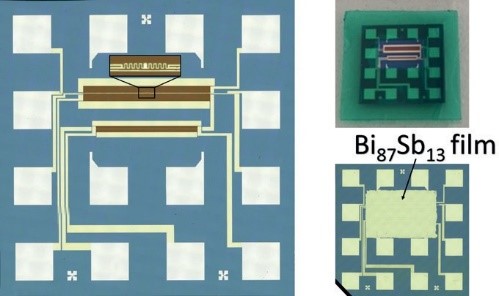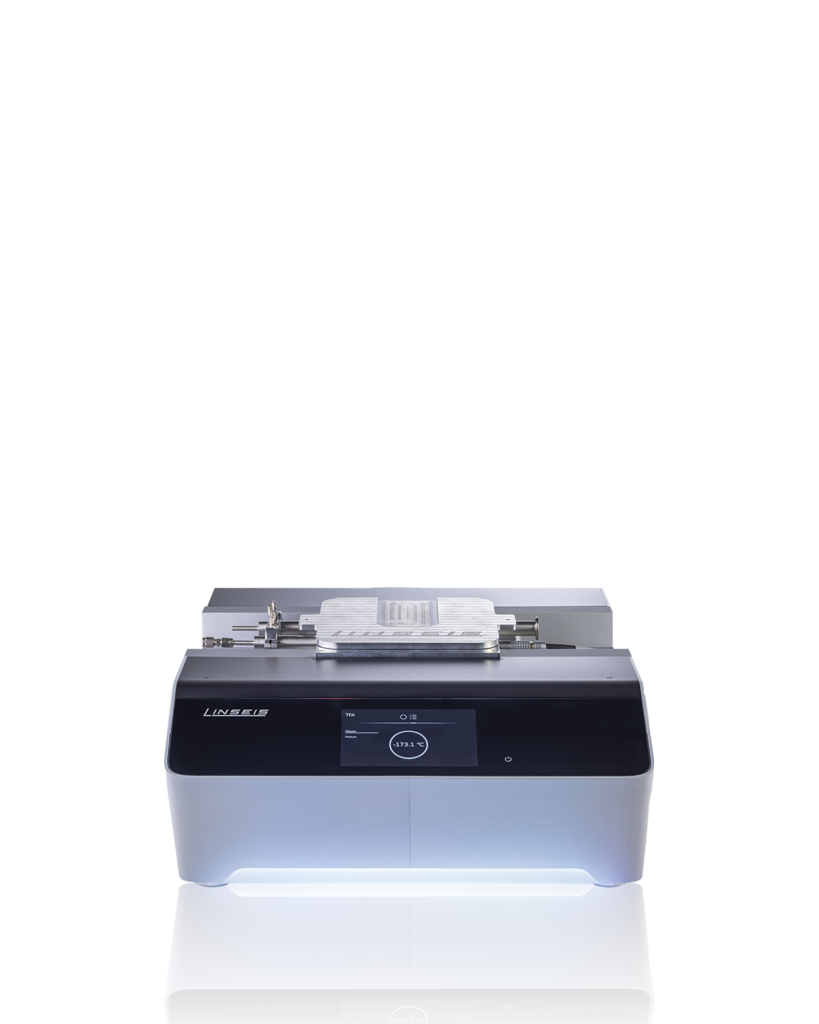Thermoelectric materials are used in thermoelectric generators that convert a temperature gradient into a voltage.
To characterize the performance of a thermoelectric material, the so-called figure of merit (ZT) is used.
To calculate the quality index, thermal conductivity, electrical conductivity and the Seebeck coefficient must be known.
Compared to bulk materials with the same composition, thin films have lower thermal conductivities, while the electrical conductivity and Seebeck coefficient are much less affected, resulting in higher ZT values.
Bismuth antimonides with different chemical compositions are well-known semiconducting, thermoelectric materials.
Electrical conductivity, thermal conductivity and Seebeck coefficient were measured in a temperature range from 120 K to 400 K on a nanolayer Bi87Sb13 with a thickness of 142 nm, which was produced by thermal vapor deposition.
The ZT was calculated from these parameters.
The ZT shows a maximum of 0.16 at room temperature (20 °C).


